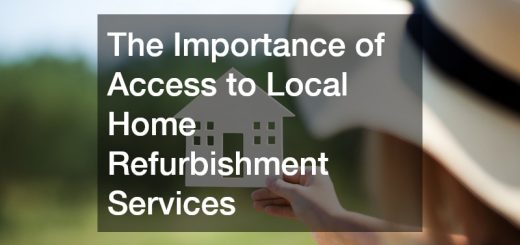5 Essential Steps for Effective Roof Restoration
Restoring a roof is not merely about aesthetics; it is about safeguarding one of the most critical parts of a home. Over time, exposure to Australia’s harsh climate—scorching heat, intense storms, and heavy rain—can take a toll on roofing materials. Roof restoration offers homeowners a cost-effective alternative to complete replacement, significantly extending the life of a roof while enhancing property value and energy efficiency. For those considering this important home improvement task, understanding the proper process is key.
Here are five essential steps for effective roof restoration that deliver lasting results.
Initial Roof Inspection & Assessment
The first step in any successful roof restoration is a thorough inspection by a qualified professional. This initial assessment helps identify the extent of damage or deterioration and determines the specific requirements of the restoration. During this process, the contractor will check for cracked tiles, rusted metal sheets, broken ridge capping, damaged flashing, and signs of water intrusion. They’ll also assess the condition of the roof structure, gutters, and drainage systems.
An accurate diagnosis is vital, as it sets the foundation for a tailored approach to restoration. Rushing this step or relying on superficial assessments may lead to unresolved problems down the line, undermining the effectiveness of the restoration work. A comprehensive inspection ensures that all existing issues are addressed systematically and nothing is overlooked.
Cleaning & Preparation
After the inspection, the roof must be prepared for restoration, which involves removing built-up debris, moss, lichen, and dirt. Pressure washing is the most common method used to clean roofing surfaces, effectively clearing contaminants that can damage materials and compromise protective coatings.
This cleaning phase not only reveals any hidden flaws but also prepares the surface for repair and resealing. It’s important that this process is done carefully to prevent water from being forced into roof cavities or causing additional damage to older materials. Once clean, the roof is inspected again to ensure that it is ready for the next phase. A well-prepared surface is essential for the longevity and adhesion of coatings and sealants used later in the restoration.
Repairing & Replacing Damaged Materials
Once the roof is clean and dry, all damaged components must be repaired or replaced. This may include replacing cracked or missing tiles, securing loose ridge caps, re-pointing and re-bedding areas of deterioration, or replacing sections of metal roofing that have rusted or warped. For tiled roofs, special attention is given to ridge capping and flashing, which are crucial in preventing water ingress.
Ignoring even small issues at this stage can result in serious structural problems over time. The quality of repair work directly affects the long-term success of the roof restoration. Materials used should match the existing roofing in both form and function, ensuring durability and a cohesive appearance. A properly repaired roof lays the groundwork for an effective restoration and helps prevent the recurrence of damage.
Sealing & Recoating
After repairs, the roof undergoes sealing and recoating. This is a pivotal step in roof restoration, as it enhances waterproofing and improves the overall resilience of the roofing system. A primer or sealer is first applied to create a bonding surface, followed by multiple layers of specially formulated roof coatings that protect against UV rays, temperature fluctuations, and moisture.
High-quality coatings not only extend the life of the roof but also improve its visual appeal, often available in a wide range of colours to complement the property. This layer acts as a protective barrier, reducing future wear and minimising maintenance requirements. In Australia’s climate, reflective coatings can also reduce heat absorption, contributing to better energy efficiency within the home.
Final Inspection & Maintenance Planning
The final stage of roof restoration involves a detailed post-work inspection and the establishment of a maintenance plan. A professional will examine the finished restoration to confirm all elements have been addressed to standard, ensuring quality workmanship and compliance with building codes.
At this stage, the contractor will often provide guidance on routine maintenance to preserve the restored roof. This may include recommended intervals for inspections, gutter cleaning schedules, and prompt action on visible wear or damage. Regular maintenance is essential to protect the investment in restoration and to keep the roof functioning effectively for years to come.
A well-maintained roof not only retains its structural integrity but also helps maintain curb appeal and resale value. Homeowners who stay proactive with upkeep can extend the lifespan of their roof significantly, delaying the need for more costly repairs or replacement in the future.
Roof restoration is a complex but highly rewarding undertaking when executed correctly. By following these five essential steps—starting with a comprehensive inspection and ending with a solid maintenance plan—homeowners can revitalise their roofs and improve their property’s protection against the elements.
Whether addressing minor wear or recovering from years of neglect, roof restoration offers a practical and cost-efficient solution that brings new life to one of the home’s most vital assets. With careful planning, quality workmanship, and ongoing care, a restored roof can deliver dependable performance and peace of mind for many years to come.



